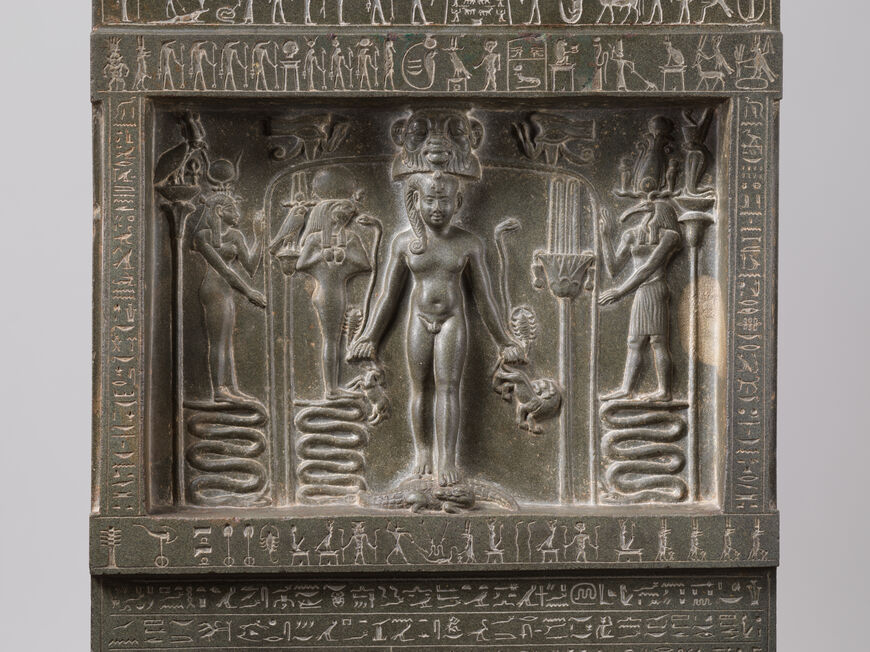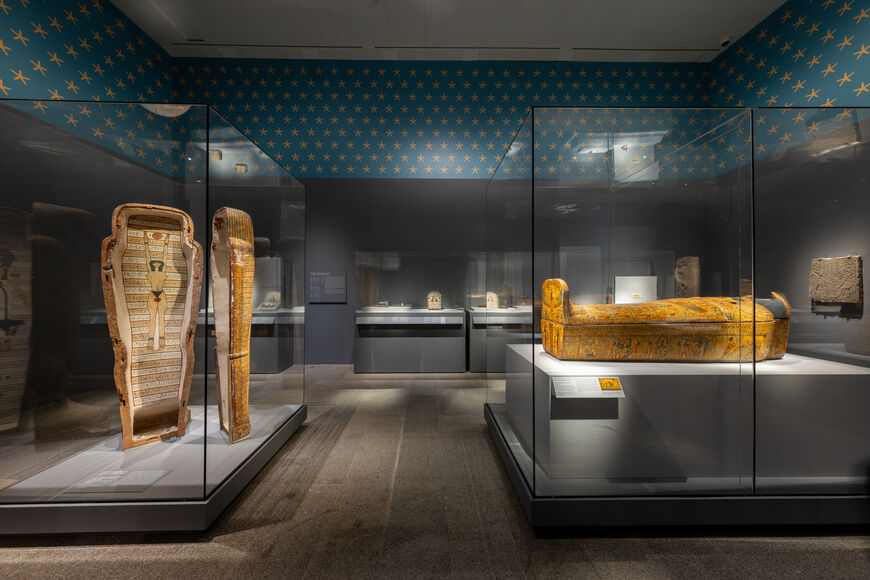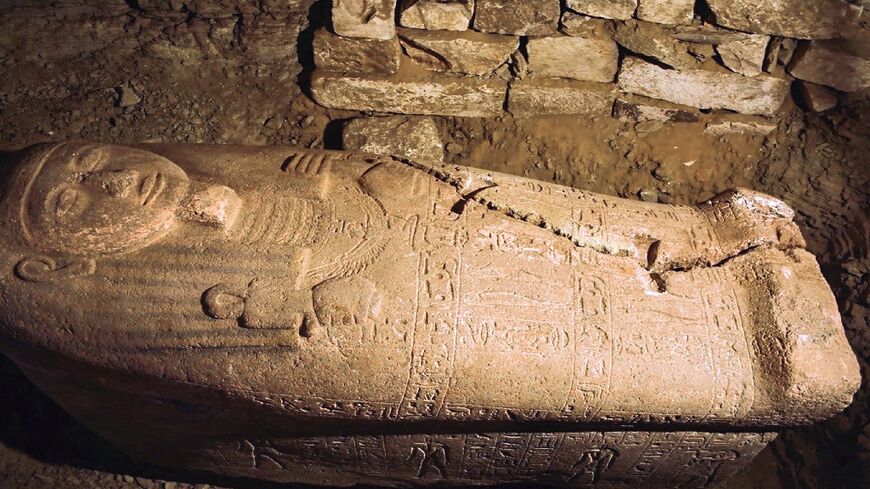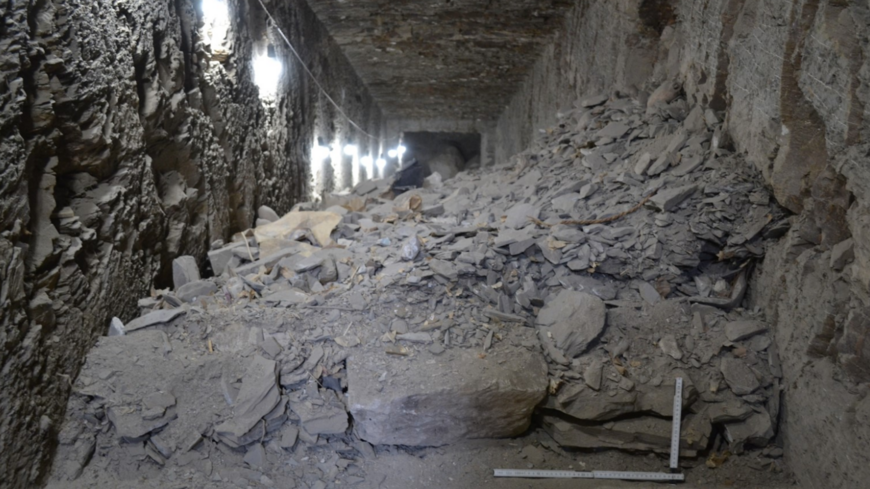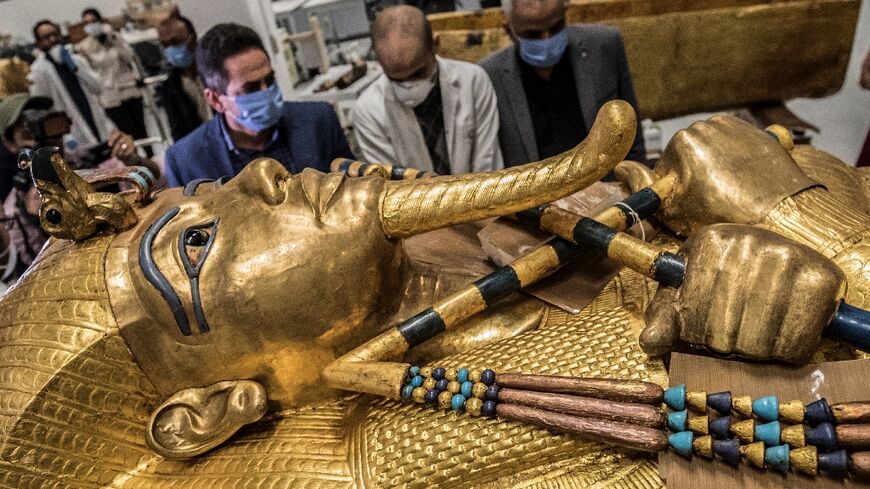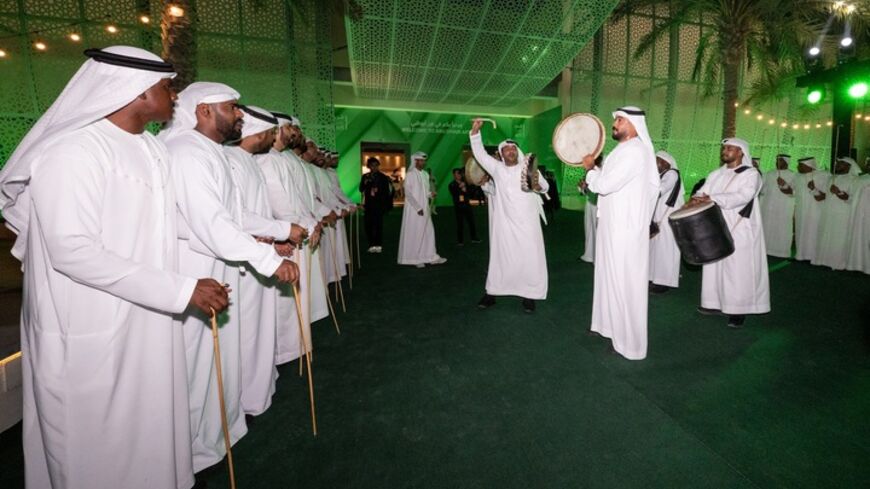‘Divine Egypt’ brings ancient gods to life at New York’s Met
The Metropolitan Museum of Art's new exhibition on ancient Egypt features nearly 100 pieces from international institutions and focuses on the iconography identifying deities.
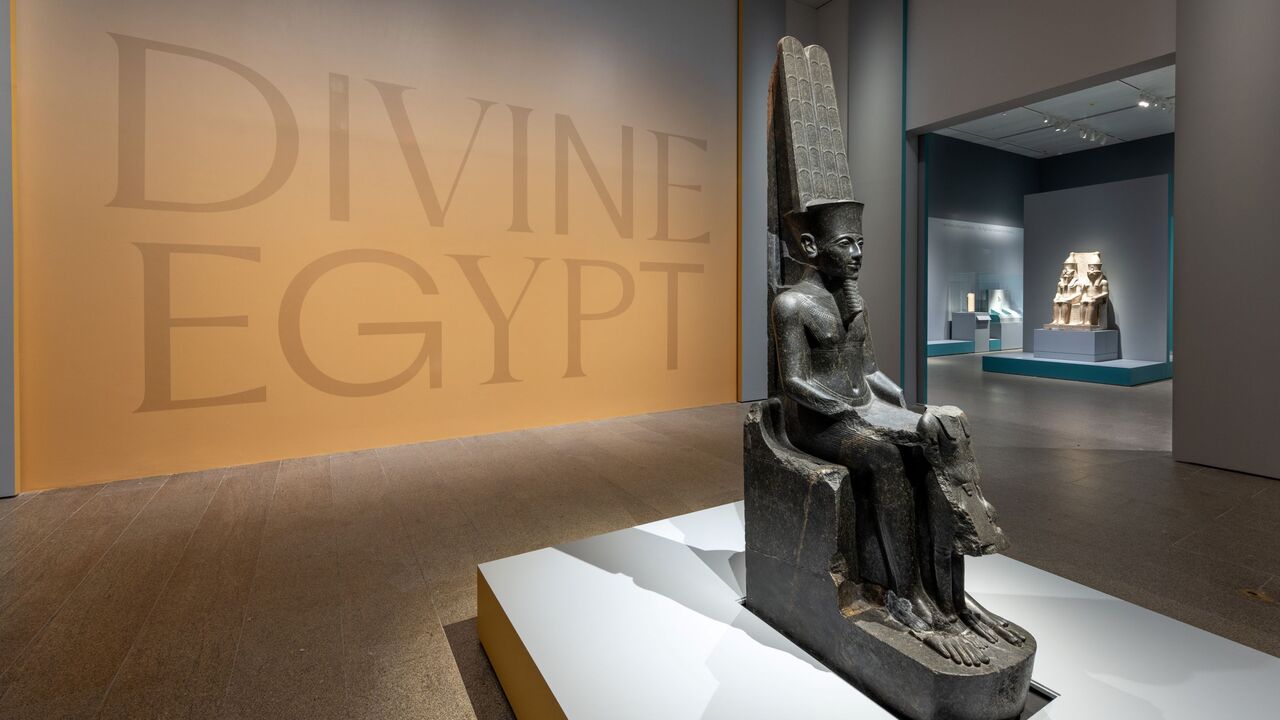
NEW YORK — One of New York City’s most prominent art museums this month unveiled its biggest ancient Egypt exhibition in more than a decade, focusing on gods and deities from the period.
“Divine Egypt” opened Oct. 12 at the Metropolitan Museum of Art and features a number of ancient Egyptian artworks exhibited together for the first time. The show includes 150 works from the Met’s own collection as well as nearly 100 pieces on loan from other museums and institutions, Diana Craig Patch, the museum’s curator of Egyptian art, told Al-Monitor.
“This is the first exhibition to explore the iconography used to identify Egyptian deities and how their attributes altered or remained stable over time as religious practices and ideas regarding divine roles and responsibilities changed,” said Patch.
Illustrating how artistic representations of the gods changed over the course of ancient Egyptian civilization, including a flexibility by some of them, “Divine Egypt” presents a number of depictions of the god Hathor, showing her as a woman and as a cow — a symbol of motherhood at the time. The stelae, ostracon (pottery with an inscription), and other objects depicting the god Seth reveal him to have been both revered and vilified at different times. One stone stela shows Seth in the unusual form of a bull with ram horns and wings as he protects a ship.
Accompanying audio guides delve deeper into the complex and evolving roles of the gods.
The Met decided on the exhibition due to the public being “incredibly passionate” about Egyptian art, Patch said. A 2024 survey by the museum showed that its Egyptian galleries receive the most local, domestic and international visitors.
“Ancient Egypt is one of the most recognizable ancient cultures,” said Patch. “Ancient Egyptian imagery saturates our modern world.”
“Divine Egypt” builds on the Met's extensive collection of Egyptian art, which includes the Roman era Temple of Dendur, originally erected in Nubia, and jewelry belonging to Princess Sithathoriunet, from the Twelfth Dynasty (19th century BC), to cite a few of the objects among its holdings.
Installation view of Divine Egypt, running October 12, 2025–January 19, 2026, at the Metropolitan Museum of Art, New York. Photo by Anna-Marie Kellen (Courtesy of the Metropolitan Museum of Art)
Fascination with Egypt’s ancient heritage shows no sign of waning, as new discoveries across the country continue to deepen understanding of one of history’s most captivating civilizations. In February in the southern city of Luxor, the Egyptian Ministry of Tourism and Antiquities announced the discovery of the ancient tomb of King Thutmose II, the first royal tomb to be found since Tutankhamun's in 1922.
In 2024, archaeologists identified what may be another tomb in Giza, outside Cairo. Earlier this month, the tomb of Pharaoh Amenhotep III, discovered in 1799 near Luxor, was opened to the public after years of restoration.
Patch said the Met has a “long history of collaboration with Egypt” and has loaned objects from its collection to Egyptian institutions in the past. She added that due to the age and fragility of the works in “Divine Egypt,” the exhibition will not travel to other museums.
“Divine Egypt” is at the Metropolitan Museum of Art, New York City, through January 19, 2026.

